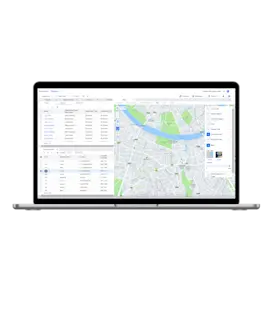Your Fleet Operating Costs May be Too High If…
Your Fleet Operating Costs May be Too High If…
Your Fleet Operating Costs May be Too High If…
Feb 4, 2021
Aptean Staff Writer
Am I paying too much for my delivery fleet? If you’re a private fleet manager, you should ask yourself this question pointedly and often.
Of course, delivery operations are always going to be a cost center. And there’s nothing you can do about the cost of gas, or vehicles, or drivers. But deploying better, smarter truck routes can substantially reduce fleet operating costs – by as much as 30%.
Even better, more efficiently routed delivery trucks can confer other important benefits, such as improved customer service levels, making your department the cost center that helps the rest of the business shine.
But first, you have to identify a need. Here are some of the signs that your fleet operating costs are higher than they need to be.
Your Fleet Operating Costs Are Increasing Faster Than Your Revenue
It’s great that you’re bringing in new customers and getting bigger orders from existing ones. But there’s more to business success than revenue generation.
B2B customers are increasing demands for tighter time windows, more frequent deliveries, smaller shipments and better ETAs. Yet all too often, businesses panic about how to ensure delivery capacity that can cover business growth or customer demands.
Instead, businesses end up buying new trucks, hiring new drivers, and adding new, standalone routes without stepping back and looking at the delivery network as a whole. If you can’t meet reasonable increased delivery demands while remaining profitable, it’s a sure sign you’re not keeping control of your fleet operating costs. With well-run, efficient delivery route planning and execution, you can continuously assess and control your cost to serve.
Your Customer Service Or Other KPIs Are Suffering
Few things in business are as damaging as an unhappy customer. Not only might you lose the business altogether, but you’ll incur extra costs from staffing customer complaint hotlines and sending urgent, corrective deliveries.
The same goes for missed deliveries, poor on-time-in-full performance and other key performance indicators (KPIs) such as cost per mile or cost per drop. All of these factors can quickly drain away profits if you let them.
If you’re not using software that keeps a careful tally of crucial delivery KPIs, you’re most likely missing the chance to seek out and fix expensive problem areas.
You Have a High Incidence of Assets Being Inactive Over Two Days
You won’t need every one of your trucks at full capacity every day. Demand ebbs and flows– day by day and season by season.
But if a good number of your trucks are regularly parked for more than two days, then you may be running more trucks than you really need. Just one new tractor-trailer combo costs about $160,000, and putting a driver behind the wheel adds another $84,000 per year, including benefits, according to the National Private Truck Council (NPTC). Route planning software can reduce costs by maximizing vehicle utilization and preventing unnecessary fleet expansion.
You’re Manually Planning Delivery Routes
With advanced route optimization software, large, complex delivery routes should take minutes, not hours, to plan. That’s because computer algorithms can assess millions of possible combinations in the blink of an eye, leaving humans to do what they do best – handle exceptions and make tactical and strategic decisions.
If you’re clocking up substantial man-hours just to plan routes, you’re likely using rudimentary or manual methods for routing and scheduling—you’re throwing away valuable time, money and human resources that could be better deployed elsewhere.
Another cost comes from the fact that manually planned routes will not be optimal. Planning manually does not allow you to consider all the millions of route permutations—resulting in routes that are 10% to 30% less efficient. According to the NPTC, each extra mile costs $2.80. That can quickly add up to thousands of dollars of unnecessary costs per week.
You’re Not Comparing Planned Delivery Routes With Actual Performance
If your route planning process has been automated, but you haven’t yet connected your route planning software with your in-cab telematics data, chances are many of the cost efficiencies identified during planning will not be realized.
Just because there’s a plan doesn’t mean the driver will follow it. Real-time monitoring allows you to see when drivers leave the planned route, deliver out of sequence, exceed planned miles, and other inefficiency indicators.
The bottom line is that every dollar wasted on delivery routing inefficiencies is a bite out of profits and a dollar that could be invested in improvements elsewhere, such as low-emission vehicles or driver retention bonuses.
Not only does advanced route optimization software drive down fleet operating costs, but it also makes delivery operations more predictable and reliable. Because the software gathers huge amounts of data that reveal habitual problems or challenges, it also offers the opportunity for continuous improvement.
With Aptean Routing & Scheduling Paragon Edition software, you won’t just drive down costs; you’ll improve performance, too, and keep improving it.
Are you paying too much for your private fleet operations? Our routing experts can run a quick diagnostic and show you how you can use route optimization software to drive down fleet operating costs while improving overall delivery performance.
Tried the product tour and ready to get into gear?
Book your full demo with our team today to see how our advanced routing software can help you accelerate performance.



